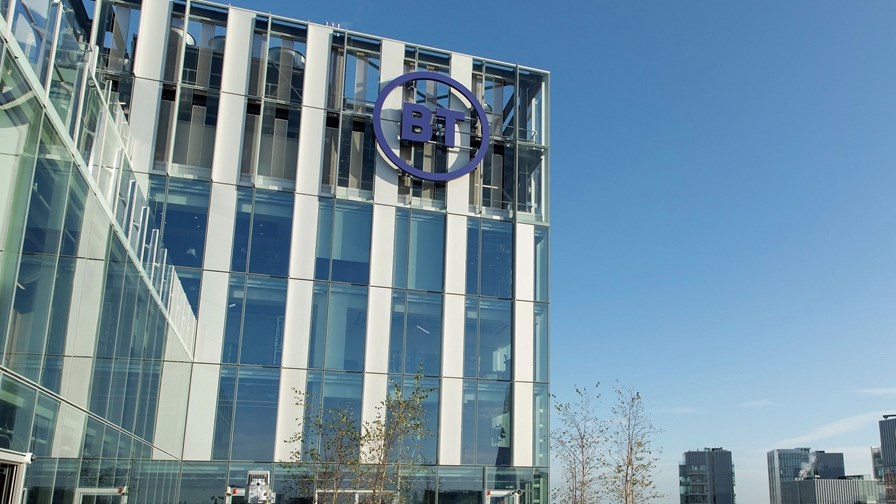
- BT believes it can save around £500m over the next eight years by switching off its legacy fixed networks
- The UK telco also believes its network modernisation efforts will reduce its power consumption by about a quarter
- BT’s CTIO, Howard Watson, sees additional simplification and security advantages from shutting down legacy networks
- The operator is undertaking the hefty task of network overhaul as “while it’s cool to be retro, it’s also cool to be reliable”, says BT’s chief architect Neil McRae
BT believes plans to shut down a number of legacy fixed networks can save the UK telco approximately £500m, and significantly reduce its power consumption, by the end of this decade.
At a media and analyst event held at its new headquarters in London, BT CTIO Howard Watson and the operator’s chief architect, Neil McRae, provided updates on a long-term network vision that was first outlined in July 2021 – see BT lays out its next-gen network roadmap, with convergence and 5G at its heart.
As part of its infrastructure evolution plans, the telco is to pull the plug on a long list of networks and services based on legacy technologies by the end of 2025. That list includes: the 3G mobile network layer; copper line-based voice and data services (including PSTN voice and xDSL broadband services for consumer and enterprise customers); and legacy optical transport systems (including PDH and SDH).
According to BT, the move will bring about many benefits, including a “huge amount” of simplification, increased security and improved quality of service for customers.
And then there are the cost savings: Currently, the cost of maintaining multiple legacy networks used by only a fraction of BT’s customer base is very high, according to BT’s executives, though they didn’t disclose any figures.
What they did say, though, is that shutting down the public switched telephone network (PSTN) and shifting from copper to fibre access lines will deliver savings of about £500m between now and BT’s financial year 2030-31.
Another advantage of sunsetting the legacy networks is that it will reduce BT’s power consumption levels by 550GWh by 2025 – that’s a hefty chunk of the current consumption level of 2400GWh, Watson noted. BT is also looking at other ways to further increase its energy efficiency, not just for the increasingly obvious cost reasons but also to contribute to achieving the telco’s sustainability goals.
What is BT already doing?
Watson and McRae explained the operator has taken significant steps towards shutting down the legacy systems.
In terms of 3G – which accounts for 30% to 35% of the total power used by BT’s mobile networks – the operator is retiring the systems in three phases. The initial stage involved switching off 3G femtocells, a move that was largely completed by July.
In the second phase, the telco is trying to persuade EE customers who signed up for their 3G services as Orange UK and T-Mobile UK customers and have never felt the need to shift off those service plans, to “carefully” move to 4G and 5G by December 2022. (Orange UK and T-Mobile UK merged in 2010 to form Everything Everywhere, which then became EE and was ultimately acquired by BT in 2016.)
Finally, any remaining customers still connected to the 3G network will be migrated to an alternative service package by the end of 2023, before the 3G systems are closed down in 2024.
Watson noted that the telco is confident that it can retire 3G as downlink traffic carried over this network dropped from 5.65% of the total mobile traffic volume in January 2020 to 2.21% in August 2022.
In terms of the PSTN, BT is planning to migrate more than 100 local exchanges off the PSTN before 2025, and to close down all legacy PSTN-enabling systems in its 5,600 exchanges by the end of 2025.
The telco also plans to ultimately shut down 4,500 of its local exchanges, with pilot closures planned for 2024.
McRae explained the company is looking at ways to identify elements from the legacy equipment that could be reused for other purposes.
Selling the case for fibre-to-the-premises (FTTP) compared to copper lines, McRae said the latter is a technology from the 80s. “And while it’s cool to be retro, it’s also cool to be reliable”, he argued.
With regards to 3G, he explained that while the network once “served us well”, it is now starting to age and “to build platforms on top of this network is crazy”.
Watson added that, in total, BT has tasked itself with more than 12 million legacy migrations – with the largest involving the closure of the PSTN. BT has also had to consider the growing shortage of skilled workers who are familiar with legacy network operations, as newcomers to the industry are not being trained to run and troubleshoot such systems.
Industry analyst Paolo Pescatore, founder of PP Foresight, told TelecomTV that BT is delivering on its vision of rolling out next-generation networks (5G and FTTP) while closing down older operations. “The scale of this task should not be underestimated” and importantly, the operator is making the transition while “minimising disruption for customers,” Pescatore pointed out.
- Yanitsa Boyadzhieva, Deputy Editor, TelecomTV
Email Newsletters
Sign up to receive TelecomTV's top news and videos, plus exclusive subscriber-only content direct to your inbox.




